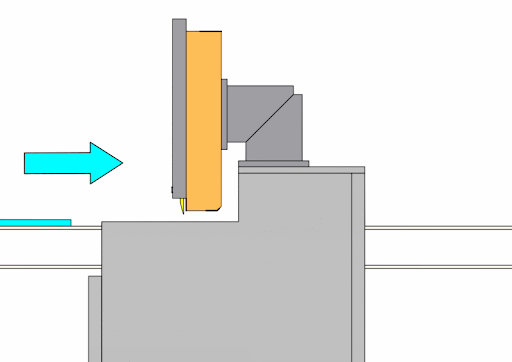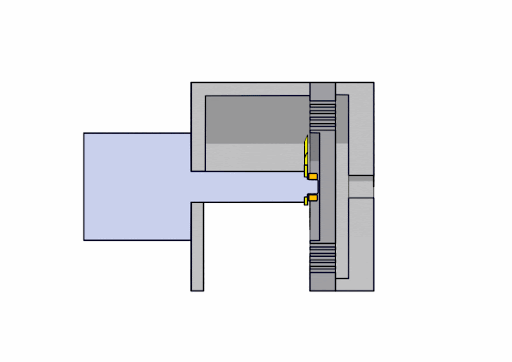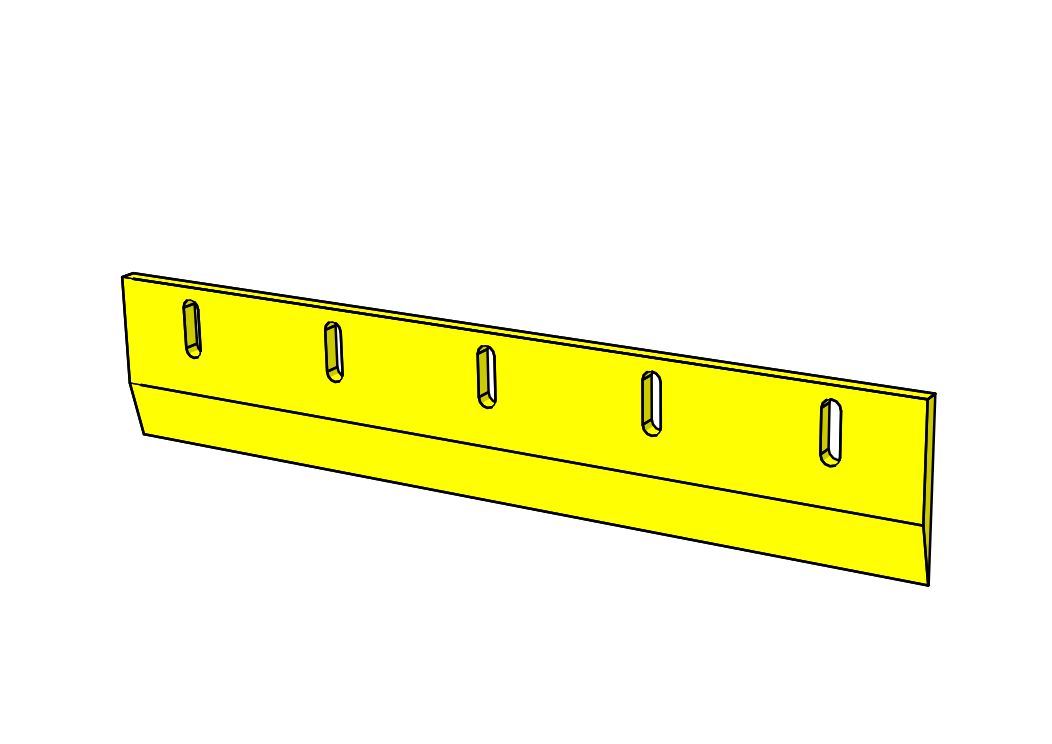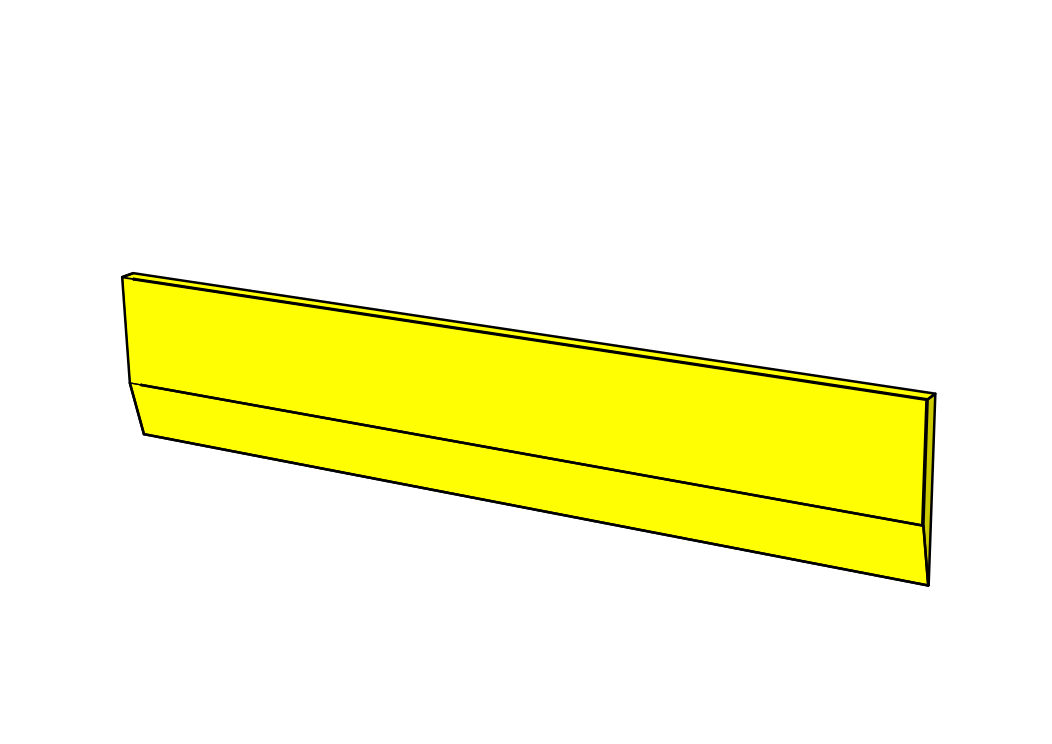
Blade Design Guide
Industrial blades are tools that are used in a variety of industries, such as automotive, aerospace, and construction. Bauccor can and will help you through the process of the design from research and conceptual design to design and choosing of the material and finish you would need for your specific application. Please don’t hesitate to contact us at any phase of the design process.
1. Research and conceptual design
When designing an industrial blade, the first step is to research and conceptualize the design. This step is important because it allows you to determine the specific requirements for your blade, as well as the overall design.
The research phase should include a study of the specific industry or application in which the blade will be used. This study will help you understand the unique features of the blade, and it will give you insight into the competition, and you should be able to develop a conceptual design for your blade.
2. Defining the blade’s geometry:
The research phase should give you an idea of the main requirements of the cutting process and the type of required blade. Next, you can begin defining the characteristics of the blade that meet the specific cutting requirements which are:
A. Blade type:
Determine the specific type of blade required based on the cutting application, such as straight, circular, curved, or custom shape blades.
B. Blade dimensions:
Define the required dimensions of the blade including length, width, and thickness to ensure a proper fit and compatibility with your cutting machine or process.
C. Blade edge configuration:
Specify the edge geometry such as straight, serrated, scalloped, saw, toothed, or smooth, based on the desired cutting performance and the material being cut.
D. Blade mounting:
Define the mounting features of the blade such as clamping, bolting, or specific mounting mechanism, based on your cutting machine or process.
E. Blade material:
Select the appropriate material for the blade based on the cut material, hardness, wear resistance, environment. We offer several materials such as
F. Bevel hardness:
Determine the desired hardness level of the blade to ensure it can withstand the cutting forces and maintain its sharpness over time.
G. Blade coating & surface treatment:
Consider applying coatings or surface treatments to enhance the blade’s performance, reduce friction, increase hardness, and improve corrosion resistance.
H. Blade stability and rigidity:
Ensure that the blade’s design provides adequate stability and rigidity to minimize vibration, deflection, and distortion during your cutting process.

Baucor, as a trademark of Norck, proudly operates under ISO 9001:2015 certification.
Key aspects include:
- International Standards: Ensuring all processes align with globally recognized quality benchmarks.
- Customer-Centric Approach: Prioritizing customer satisfaction through consistent and reliable service.
- Continuous Improvement: Emphasizing the optimization of operations and workflows.
- Operational Excellence: Maintaining efficiency and reliability in all activities.
This certification reflects Baucor’s ongoing commitment to quality and performance.
Click here to view our ISO certification.
UNMATCHED ENGINEERING SUPPORT




GET A QUOTE
Blade type:
At Baucor we offer four types of blades:




















• Highly effective for continuous cuts
• Efficient and rapid cutting
• Woodworking
• Metalworking
• Food industry
• Packaging
• Suitable for a wide range of applications
• Provides clean and precise cuts
• Minimal waste material waste
• Metalworking
• Paper and printing
• Packaging
• Plastic cutting
• Ideal for curved cuts and intricate
• Smooth and precise cuts
• Leather and textile industries
• Optimized for specific cutting applications
• Withstand demanding conditions
• Medical
• Aerospace
• Automotive
Below are some samples of industrial blades :




Blade edge configuration:
The most important part of the blade is the cutting edge. For this, we offer various configurations including simple and complex shapes.




















GET A QUOTE
Blade mounting:
After choosing the shape of the blade, you can define how it is mounted to your machine.
Our straight blades can be mounted on machines with the help of mating faces.

Two holes

Two Slots

Mating face and a hole
Depending on the cutting force, the blade may require more holes to transmit the force from the cylinder. Holes can be through, countersunk, or counterbores.

No holes
Our circular blades have a center hole to align the blade to the rotating axis and a keyway or a hole to transmit the rotating torque to the disk. Depending on the cutting force, the blade may require more holes to transmit the force from the motor. Holes can be through, countersunk, or counterbores.
Next, the blade is held in place by a clamping system, such as a nut.
Blade material:
Next is to determine the material of the blade, each application requires a specific material and/or finish. The selection depends on:
- Intended application
- Cutting environment
- Desired properties such as hardness and corrosion resistance
The materials you choose must meet the requirements of the blade and must be suitable for the manufacturing process. Evaluate various materials such as carbide, high-speed steel (HSS), stainless steel, and tool steel.
Blade coatings & surface treatments:
The blade tips can also be coated with different materials to help improve resistance to wear or corrosion. We offer various coatings and surface treatments such as tungsten, chrome, or diamond coatings.
3. Validate the design:
Before proceeding with production, it is crucial to validate the design through numerical analysis methods such as finite element analysis (FEA) or prototyping. You can use rapid prototyping methods such as 3D printing to get a hands-on evaluation of the design’s functionality, ergonomics, and fit within the machine where it will be used. If necessary, iterate the design base on the feedback from the analysis or prototype.
Conclusion
Designing an industrial blade is an intricate process that demands a deep understanding of the blade’s requirements, utilization of advanced design tools, and attention to detail. By following the steps listed above, designers can create a design of an industrial blade that optimizes functionality and performance.


 English
English